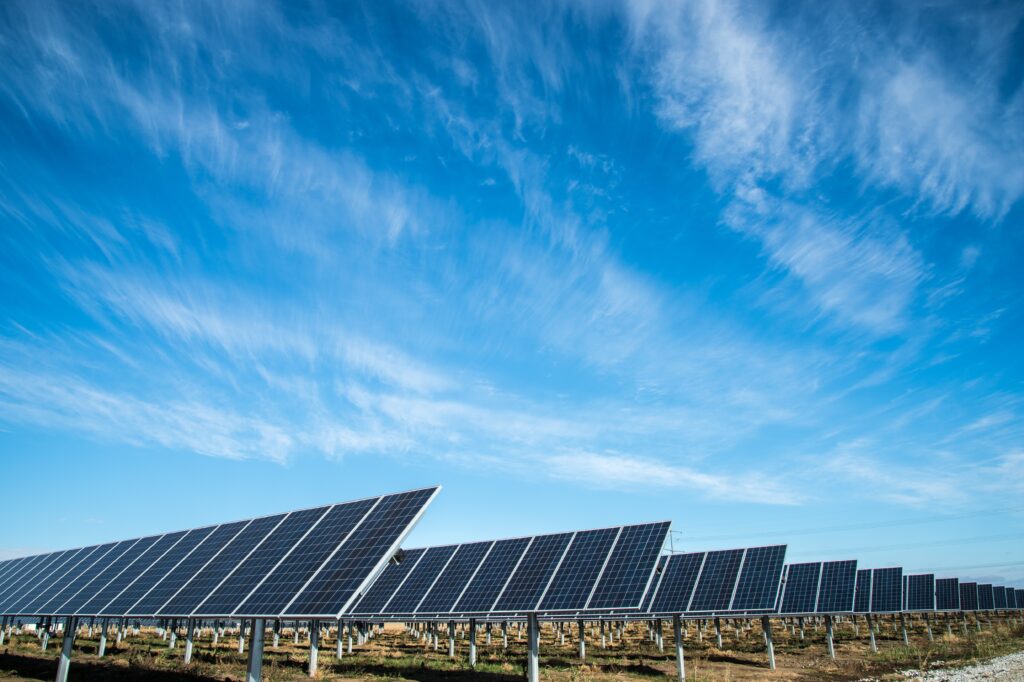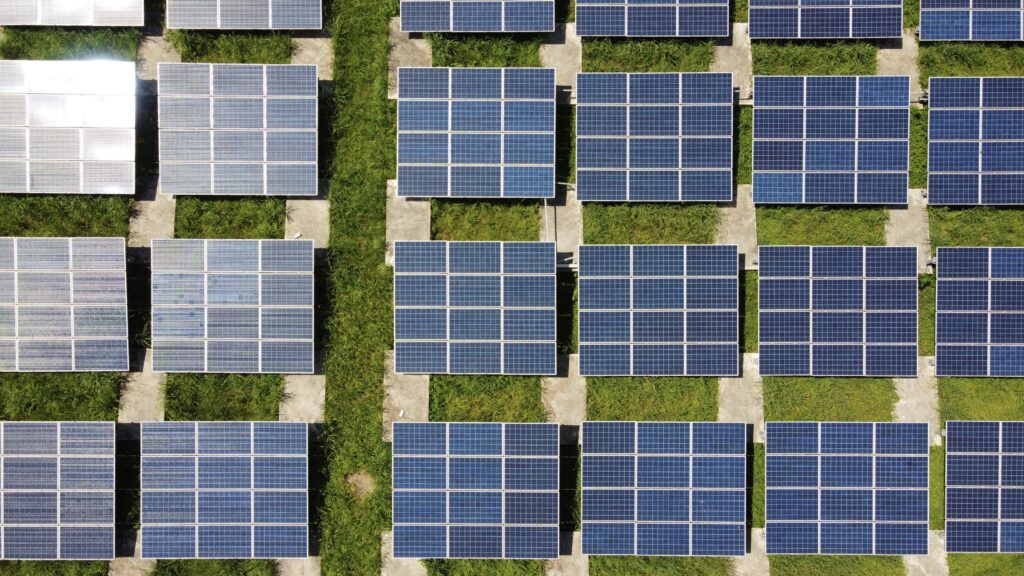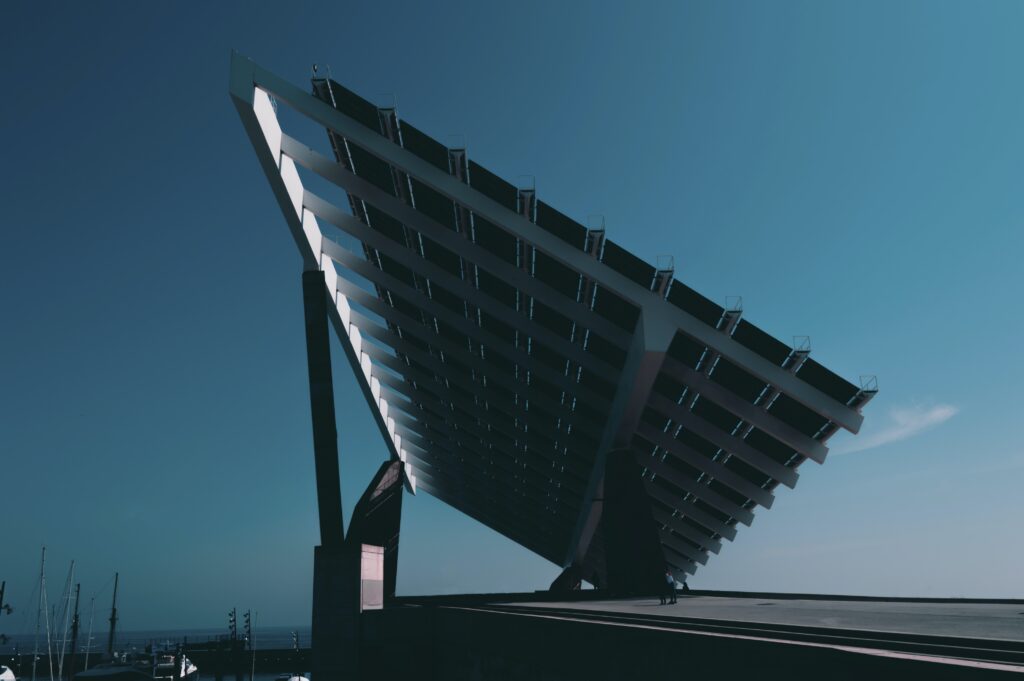Curious about whether solar panels can harness the power of moonlight? This article explores the question of whether solar panels can effectively generate electricity during nighttime hours. Considering the moon’s reflection of the sun’s light and the advancements in solar technology, it’s worth examining the potential of utilizing moonlight to power solar panels. Let’s shed some light on this topic and see if moonlight holds any meaningful energy for solar panels.

Understanding The Function of Solar Panels
The basic mechanism of solar panels
Solar panels are devices that convert sunlight into usable electricity. They are made up of photovoltaic (PV) cells, which are primarily responsible for capturing and converting solar energy. When sunlight hits the surface of the solar panel, the PV cells generate an electric current through a process known as the photovoltaic effect.
Key components of a solar panel
Apart from the PV cells, solar panels also consist of other essential components. These include an inverter, which converts the direct current (DC) produced by the PV cells into alternating current (AC) that can be used to power appliances and devices. Additionally, there is a mounting system that securely holds the solar panels in place and enables them to efficiently capture sunlight. Finally, there is a wiring system that connects the different components and allows for the transfer of electricity.
How sunlight is converted into electricity
Sunlight is made up of tiny particles of energy called photons. When photons strike the surface of the PV cells, they knock electrons loose from their atoms. This creates an electric current that can be harnessed as electricity. The PV cells are made of semiconductor materials, such as silicon, which are able to facilitate this process effectively. As the electrons flow through the PV cells, they generate DC electricity that can be utilized for various purposes.
The Concept of Moonlight
What is moonlight
Moonlight refers to the light that is reflected by the Moon and reaches the Earth’s surface during nighttime. It is a much dimmer and softer form of light compared to sunlight. Moonlight is created when the Sun’s rays bounce off the Moon’s surface and are scattered back into space in all directions. This scattered light then reaches the Earth and illuminates our surroundings during the night.
How moonlight is formed
Moonlight is formed through a process called lunar illumination. As the Sun’s light hits the Moon, its surface reflects and refracts the light, causing it to scatter and create diffused illumination. The amount of moonlight observed on Earth depends on various factors, including the Moon’s phase, its distance from the Earth, and the presence of atmospheric conditions that may interfere with the passage of light.
The intensity and characteristics of moonlight
Moonlight is significantly dimmer than sunlight, as the Moon lacks its own source of light and merely reflects the Sun’s light. The intensity of moonlight varies depending on the phase of the Moon, with full moons providing the brightest illumination. Additionally, the color temperature of moonlight is cooler compared to sunlight, appearing bluish in nature. Overall, moonlight provides a gentle and serene ambiance, distinctly different from the bright and energizing qualities of sunlight.

The Relationship Between Solar Panels and Light
The photovoltaic effect and light
The photovoltaic effect is the process by which solar panels convert light energy into electricity. It is the fundamental principle behind the functioning of solar panels. When photons from sunlight or any other light source strike the PV cells in the solar panel, they excite the electrons in the semiconductor material. This causes the electrons to be set in motion, creating a flow of electric current that can be harnessed for power.
Role of sunlight in solar panel operation
Sunlight is the primary source of energy that solar panels are designed to utilize. Due to its higher intensity and wavelength, sunlight produces a greater number of photons, resulting in a stronger and more efficient conversion of light to electricity. The specific wavelength range of sunlight is optimal for the semiconductor materials used in PV cells, ensuring a high rate of electron excitation and electric current generation.
Impact of light intensity on solar panel performance
The intensity of light plays a crucial role in determining the performance of solar panels. Higher light intensity means a greater number of photons are available to excite electrons, resulting in a higher electric current output. Therefore, solar panels are most efficient when exposed to direct sunlight. However, even in lower light conditions, such as cloudy days, solar panels are still able to generate electricity, albeit at a reduced efficiency.
Solar Panels Under Moonlight
Do solar panels work at night
Solar panels are generally not designed to operate effectively at night, as they rely on the presence of sunlight to generate electricity. Without sufficient light intensity, the PV cells in solar panels do not receive enough photons to initiate the photovoltaic effect. Therefore, solar panels alone are unable to generate significant power during nighttime hours.
The possibility of power generation under moonlight
While solar panels are not optimized for moonlight, they can still generate a small amount of power under certain conditions. Moonlight, although much dimmer compared to sunlight, still carries photons that can excite the electrons in PV cells. However, the power output under moonlight is significantly lower than during daylight hours.
Comparing solar panel efficiency under sunlight and moonlight
Solar panels are designed and calibrated to function optimally under sunlight, as it provides the highest light intensity and photon count. In contrast, moonlight offers only a fraction of the light intensity and fewer photons. Consequently, the efficiency of solar panels under moonlight is considerably lower than under direct sunlight. While solar panels can generate a minimal amount of electricity under moonlight, it is not sufficient for significant power generation.

The Role of Reflection and Refraction
The process of light reflection
Reflection occurs when light waves bounce off a surface. When sunlight or moonlight strikes the surface of a solar panel, a portion of the light is reflected back. The reflectivity of the solar panel’s materials influences the amount of light that is reflected. Higher reflectivity reduces the amount of light available for electricity generation, thus decreasing the overall efficiency of solar panels.
Understanding light refraction
Refraction refers to the bending of light as it passes through a medium, such as air or a transparent material. When sunlight or moonlight enters a solar panel, it encounters different layers of materials with different refractive indices. This causes the light to change direction and pass through the various layers, ultimately reaching the PV cells. Proper design and material selection are essential to minimize the loss of light due to refraction.
How reflection and refraction impact solar panel performance
Both reflection and refraction can impact the performance of solar panels. Excessive reflection results in a decreased amount of light available for electricity generation, reducing overall efficiency. Meanwhile, refraction, if not properly controlled, can cause light to deviate from its original path, leading to suboptimal light absorption by the PV cells. These factors highlight the importance of minimizing reflection and optimizing refraction to maximize solar panel performance.
Existing Studies on Solar Panels and Moonlight
Research on solar panels operating under moonlight
Several studies have explored the feasibility of using solar panels under moonlight conditions. These studies have examined various aspects such as the efficiency of PV cells under moonlight, the impact of different moon phases, and the potential for hybrid systems combining solar and other renewable energy sources.
Cases of successful power generation with moonlight
While solar panels are primarily designed for use with sunlight, there have been instances where power generation with moonlight has been achieved. These cases usually involve specialized solar panels designed specifically for low light conditions or advanced technologies that can capture a broader spectrum of light. However, such instances are rare, and power generation levels remain significantly lower compared to daylight operation.
Limitations identified in studies
Research on solar panels operating under moonlight has revealed several limitations. The low light intensity of moonlight poses a significant challenge, as PV cells require a certain threshold of photons to initiate the photovoltaic effect effectively. Additionally, the reduced efficiency and power output under moonlight make it less economically viable compared to solar panels optimized for sunlight. These limitations underscore the need for further advancements in solar panel technology to enhance performance under low light conditions.
Advancements in Solar Panel Technology
New technologies to enhance solar panel efficiency
Advancements in solar panel technology are continuously being made to improve their efficiency, including under low light conditions. One promising area of research is the development of next-generation PV cells, such as multi-junction and perovskite solar cells, which have shown improved performance in capturing low-intensity light. Additionally, innovative surface texturing and anti-reflective coatings are being explored to minimize reflection and maximize light absorption.
Solar panels designed for low light conditions
Some companies have developed solar panels specifically designed for low light conditions, including moonlight. These panels incorporate specialized materials and designs that can capture a broader spectrum of light, including lower intensity wavelengths. While still in the early stages of development, these panels show potential for improving power generation under moonlight and other low light scenarios.
Innovations targeting nighttime power generation
To overcome the limitations of solar panels under moonlight, researchers are exploring the integration of other technologies into solar panel systems. This includes incorporating energy storage systems to store excess energy generated during the day for use at night. Additionally, hybrid systems combining solar panels with other renewable energy sources, such as wind or geothermal, are being developed to ensure a continuous power supply even during periods of low light.
Challenges and Limitations
Technical issues with using moonlight for solar panels
Using moonlight for solar panels presents several technical challenges. The low light intensity of moonlight significantly reduces the power output of solar panels. This makes it challenging to generate sufficient electricity to meet the demands of most applications. Additionally, the narrow wavelength range of moonlight limits the efficiency of conventional PV cells, which are optimized for higher intensity sunlight.
Environmental factors affecting solar panel performance at night
Apart from the technical challenges, environmental factors also affect solar panel performance at night. Factors such as cloud cover, pollution, and geographical location can further reduce the already limited light intensity available for power generation. These external factors can impact the viability and reliability of solar panels operating under moonlight.
Economic considerations and viability
From an economic standpoint, the viability of utilizing moonlight for solar panel systems is questionable. The significantly lower power output combined with the higher costs associated with specialized panels or hybrid systems makes moonlight-based power generation less economically feasible compared to traditional solar panels optimized for sunlight. The cost-benefit ratio must be carefully evaluated to determine the practicality of using moonlight for solar energy generation.
Alternative Power Generation at Night
Storage solutions for solar power
One alternative to relying on moonlight for power generation is the integration of energy storage systems. These systems allow excess energy generated during daylight hours to be stored and utilized at night. Common storage solutions include battery systems, pumped storage hydroelectricity, and compressed air energy storage. By implementing these storage technologies, solar power can be harnessed and utilized even during nighttime hours.
Other renewable energy sources for nighttime
Another approach to nighttime power generation is the utilization of other renewable energy sources. Wind energy, for example, can be harnessed to generate electricity during nighttime when wind speeds tend to be higher. Additionally, geothermal energy and tidal power offer consistent and reliable sources of energy that can be utilized throughout the day and night. By diversifying energy sources, a more stable and continuous power supply can be achieved.
Hybrid power systems combining solar and other sources
Hybrid power systems combining solar energy with other renewable energy sources offer a robust solution for nighttime power generation. By incorporating wind, geothermal, or other forms of renewable energy, these systems can provide a reliable and continuous power supply, even during low light or nighttime conditions. Such hybrid systems can effectively compensate for the limitations of solar panels operating under moonlight.
The Future of Solar Power and Moonlight
Possibility of technological breakthroughs
The future holds the potential for technological breakthroughs that may overcome the current limitations of solar panels under moonlight. Ongoing research and development efforts aim to improve the efficiency of PV cells, broaden the range of light they can capture, and optimize their performance under low light conditions. This may involve the use of advanced materials, emerging solar cell technologies, and innovative engineering approaches.
How this can impact the sustainable energy sector
Advancements in solar panel technology, including their operation under moonlight, can significantly impact the sustainable energy sector. By enhancing the efficiency and power output of solar panels under low light conditions, the reliance on traditional fossil fuel-based energy sources can be reduced further. Additionally, the ability to generate electricity from moonlight or other low light scenarios can contribute to achieving a more sustainable and environmentally friendly energy mix.
Predictions and expert insights for the future
While the future remains uncertain, experts predict that solar panels operating under moonlight may become more viable and efficient with advancements in technology. They envision the development of versatile and adaptable solar panels capable of capturing a wider spectrum of light and generating meaningful amounts of electricity even in low light conditions. However, further research, innovation, and investment will be required to realize the full potential of solar power under moonlight and its role in the global energy landscape.
In conclusion, although solar panels are primarily designed for capturing and converting sunlight into electricity, the possibility of power generation under moonlight exists. However, the efficiency and power output of solar panels under moonlight are notably lower than under direct sunlight. Advances in solar panel technology, including the development of specialized panels for low light conditions and the integration of storage systems and hybrid solutions, offer potential solutions to enhance nighttime power generation. The future of solar power under moonlight holds promise, but it requires further research, innovation, and economic viability to become a substantial contributor to the sustainable energy sector.




